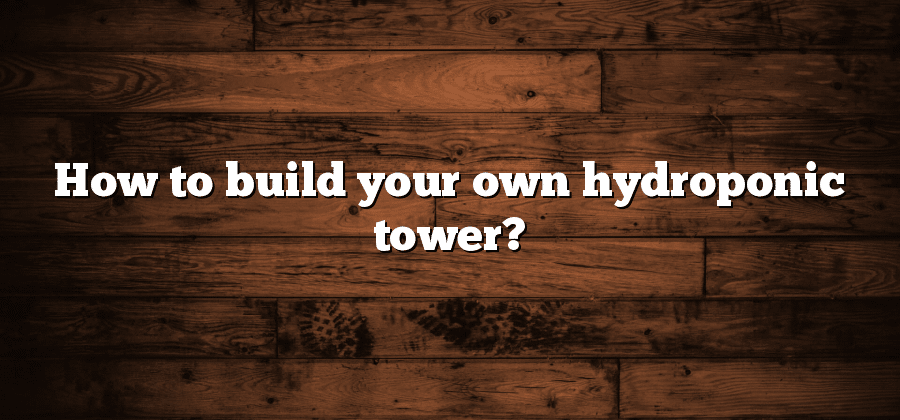Understanding the Basics of Hydroponics
Hydroponics is a gardening technique that offers a unique and efficient way of growing plants without the use of soil. Instead, plants are grown in a nutrient-rich water solution, which provides all the necessary minerals and elements needed for their growth. This method of cultivation has gained popularity in recent years due to its numerous advantages, such as faster growth rates, higher yields, and the ability to grow plants in areas with limited access to fertile soil.
One of the key aspects of hydroponics is the control it gives growers over the growing environment. By carefully monitoring and adjusting factors such as temperature, pH levels, and nutrient concentrations, it is possible to create the optimal conditions for plant growth. This level of precision allows for better plant health and can result in improved crop quality. Additionally, hydroponics is a highly water-efficient method of cultivation since it recirculates the nutrient solution, reducing water wastage compared to traditional soil-based gardening.
Selecting the Right Materials for Your Tower
When it comes to selecting the right materials for your hydroponic tower, it is important to consider factors such as durability, suitability for water-based systems, and ease of maintenance. First and foremost, you want your tower to be made of materials that will endure the constant presence of moisture without deteriorating or corroding over time. This is essential for ensuring the longevity of your hydroponic system and avoiding any potential damage or malfunctions.
In addition to durability, you should also prioritize materials that are specifically designed for water-based systems. This means choosing materials that are resistant to water absorption, mold, and mildew. Opt for materials that will not leach any harmful substances into the water, as this can negatively affect the health and growth of your plants. Moreover, selecting materials that are easy to clean and sanitize will make the maintenance process much more convenient and efficient.
Overall, selecting the right materials for your hydroponic tower is crucial for the success of your system. By prioritizing durability, suitability for water-based systems, and ease of maintenance, you can ensure that your tower will provide a stable and conducive environment for your plants to thrive.
Designing the Structure of Your Tower
One of the key aspects in constructing a hydroponic tower is designing the structure. The structure of your tower will play a crucial role in supporting the weight of the plants and the nutrient solution. It needs to be strong, stable, and capable of withstanding the elements. When designing the structure, it is important to consider the size and weight of your tower, as well as the materials you plan to use. Taking these factors into account will help ensure the durability and longevity of your hydroponic tower.
In addition to strength and stability, it is also important to think about the layout and spacing of your tower. The design should allow for easy access to the plants and minimize any potential issues with overcrowding or shading. Consider the optimal distance between each individual planting site to allow for adequate air circulation and prevent any potential disease or pest infestation. By carefully considering the design of your hydroponic tower, you can create an efficient and productive system for growing plants hydroponically.
Assembling the Framework of Your Tower
When assembling the framework of your tower in a hydroponic system, precision and attention to detail are key. Begin by laying out the necessary materials for constructing the structure, including PVC pipes, couplings, and elbows. Measure and cut the pipes according to the desired height of your tower, ensuring that each section fits securely together. Using a PVC cement specifically designed for this purpose, apply it to the ends of the pipes and connect them firmly. It is important to double-check the alignment and stability of each joint to guarantee the tower’s stability.
Once the main structure is assembled, consider the addition of support beams or crossbars to enhance the durability and stability of the tower. These additional components can be secured using PVC connectors and cement. Remember that the overall strength of the tower is crucial, as it will be supporting the weight of the plants and the water system. Lastly, inspect the framework for any weak points or inconsistencies, making any necessary reinforcements before proceeding to the next steps of your hydroponic system construction.
Creating the Water Circulation System
To ensure the successful operation of your hydroponic tower, it is crucial to establish a well-designed water circulation system. This system is responsible for circulating the nutrient-rich water solution throughout the tower, providing your plants with the essential elements they need to thrive.
When designing the water circulation system, you must consider several key components. First and foremost, a reliable pump is essential for maintaining the steady flow of water. The pump should be powerful enough to deliver the necessary amount of nutrients to all levels of the tower without causing any blockages or disruptions. Additionally, employing a timer can be beneficial, as it will automate the process and ensure consistent watering intervals for your plants. Finally, incorporating a filtration system is vital to prevent any debris or contaminants from clogging the system or harming the plants.
In the next section, we will explore the different types of materials that are suitable for constructing an efficient hydroponic tower. By selecting the right materials, you can guarantee the stability and longevity of your tower, providing the ideal environment for your plants to flourish.






